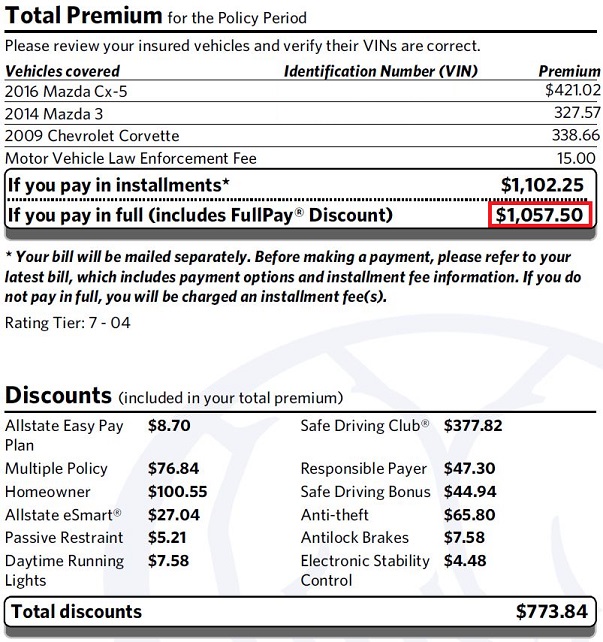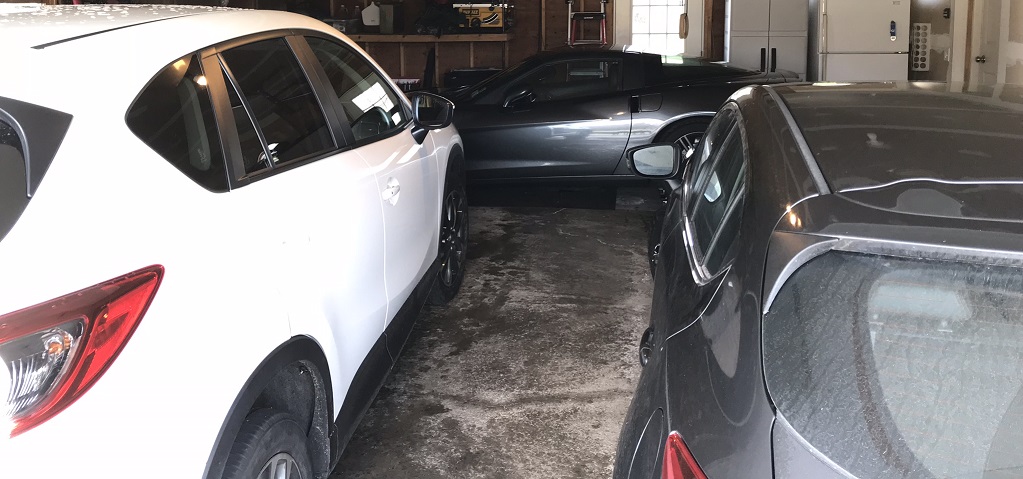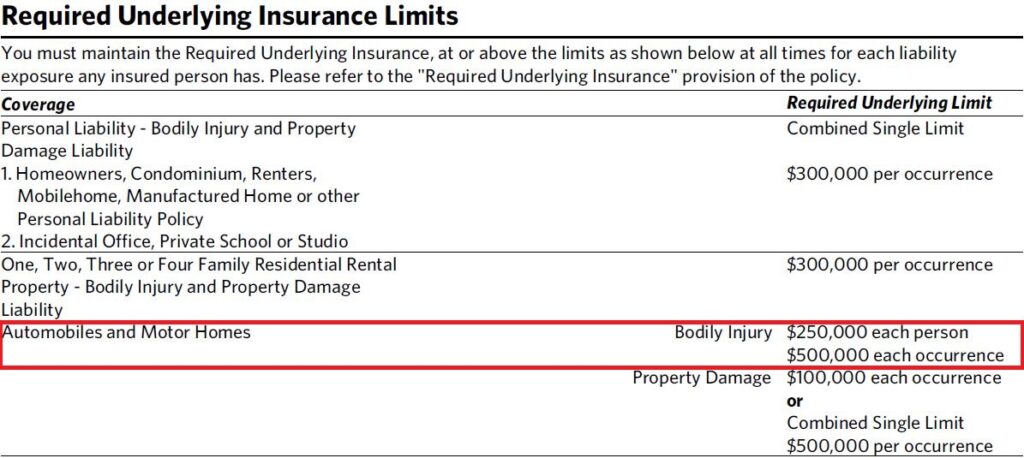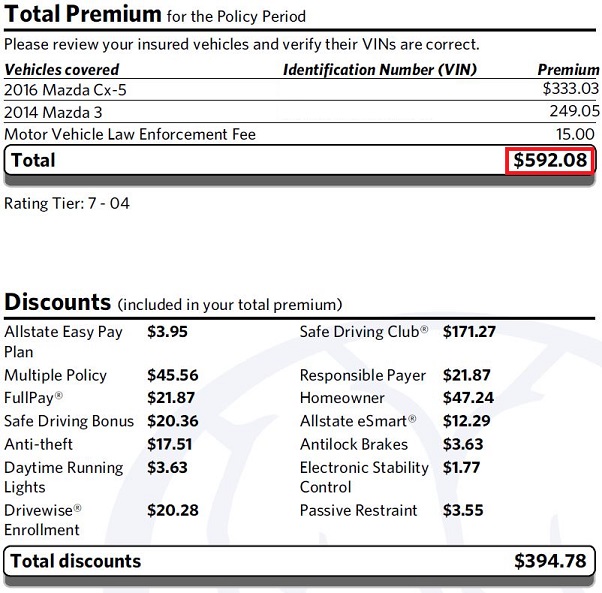
BLUF: You can reduce car insurance expenses by reviewing your policy, taking advantage of all savings options, eliminating benefits that you don’t care about and running the math before dismissing options as too “risky”.
Reducing expenses isn’t very sexy. Reducing your car insurance premiums is probably even less so. It’s not like getting a large change in income from a bonus, large pay raise, inheritance or winning the lotto. As I write this, someone is about to have their world turned upside down by winning $1B(!) with mega millions.
However, reducing expenses where you see no value is important. Reducing expenses also doesn’t happen by accident. You don’t wake up on January 1st and realize “damn, I spent $10k less last year!” It requires conscious decisions and the first thing required is to track your spending so you can see where the money goes.
After I reviewed my spending from last year I set a goal to spend less than $55,000 this year. But there’s a catch. I don’t want that reduction in spending to reduce my happiness. If I’m reducing my happiness then I’m sacrificing a long term goal of living a happy life for a short term goal of spending less than $55,000. Which do you think is more important?
How do you reduce spending without reducing happiness? Focus on optimizing your spending around the areas where you just care about functionality. In this example, car insurance. If you have a car, you need car insurance. But aside from having enough insurance to protect your from liability and fix your car in a wreck, do you want to spend anymore money than necessary?
It’s with that thought in mind that I chose to focus on car insurance as one area to try and cut costs over the last year. The list below is actually for a 6 month premium period so the cost is $2,115 for the year. Yikes! I don’t know about you but I sure as hell can think of better ways to spend that kind of money every year. So that’s our starting point. Lets talk about how I was able to reduce that number.

Reduce car insurance expenses
Here is how I was able to reduce my premiums.
Sold the Corvette – Saved $654/year
You’re probably thinking I’m so full of shit right now. How on earth is selling a sports car that I loved not reducing my happiness? Well, like many Facebook relationship statuses, it’s complicated.
It was a beautiful car with a sweet sounding exhaust making it quite the attention getter. I felt proud to own it and it always felt nice when the car would get compliments. At 430hp it was a rocket ship and I’m still baffled as to how I escaped a speeding ticket in it.
There’s a lot of baggage that came with it though. Mrs. MFI actually didn’t like to ride in it because it was too flashy for her tastes so we didn’t use it at every opportunity. There’s parking far out to prevent door dings and the constant worry about theft and vandalism in public. I thought a front license plate looked stupid on it so I risked a ticket every time I drove it since it’s required in NY and I left it off. The car is so low to the ground that I have to even angle in and out of my own driveway to not scrape the front. You have to “fall” in and out of it as well.
Having a second car creates double the work in dealing with it. A second regististration to get. A second state inspection to get done. More oil changes to get done and of course any repairs on top of that. Did I mention that reasonably priced tires for it were $1,200 a set? I’m fortunate to have a large garage to save on winter storage but it still required work to put it to sleep and then play a game of car Tetris. I know, I know: first world problems. But, it’s still something that I don’t enjoy doing that takes my time and energy every year.
Throw in a pandemic where I was driving substantially less and that was the final straw.

Added DriveWise – Saved $61/year
This is an Allstate OBD-2 device that records your driving data and gives you savings off your insurance based on your driving habits. You get a percentage off your insurance if you drive during safe hours of the day, drive under 80mph and avoid hard braking. How well you do each of those determines how much you save. Mrs. MFI was worried about privacy but I reminded her that our Google home, Alexa and iPhone are already listening to her.
Reduced auto policy coverage to align with my umbrella policy – Saved $24/year
What is an umbrella insurance policy? Umbrella insurance is a broad, catch all insurance policy that kicks in when your other insurance runs out. In this sue-happy world it’s an extra layer of protection between you and financial ruin if little Johnny’s backyard trampoline party results in a serious hurt child. Or if you’re unlucky enough to cause a 5 car pile up on the ride home.
More about umbrella policies here.

It turns out that although boring, there’s insight to be gained in reviewing your policy details. Umbrella policies have required underlying insurance limits. For an umbrella policy to kick in and help you are required to keep certain insurance coverage in a separate policy. In the example below, an auto policy with bodily injury coverage of $250,000 each person, $500,000 each occurrence (accident) are required.

I was originally paying for $500,000 per person (pp), $1,000,000 each occurrence (eo) in my auto policy and lowered that to match the umbrella minimum requirements at $250k/$500k. I still have great coverage, I just lose a little bit of maximum coverage.

The umbrella policy kicks in after the auto policy limits are reached to add an additional $1,000,000 per accident in the case of a $2M policy. It doesn’t care how you split that among individual people.
No, that isn’t a typo. A $2M policy doesn’t give $2M per accident (occurrence), it gives you $2M per year (policy period) in the case of bodily injury and property damage liability. Read and understand your coverage!

Raised deductibles – Saved $192/year
This one might be a bit controversial but I’ll let the math do the talking. I changed our deductibles from $500 to $2,000 for both comprehensive and collision. $2,000 is a big number and many people are scared off before even talking through what that means. Is it more beneficial to take an additional $1,500 in risk? Let’s find out.
Insurance is important because random things can happen and the cost to replace a car or coverage someone’s hospital bills is far more than the cost of insurance. But, if you’re a good driver and you don’t have the worst luck in the world, these incidents should be few and far between. Cars are also getting safer everyday with blindspot monitoring and a variety of ways to prevent accidents from happening.
How much coverage you carry and the deductible gets into risk versus certainty. Your insurance premiums are a certainty. Every year you pay out that money even when nothing happens. It is gone. The deductible is only something that you pay out on a claim that is much more expensive to fix than your deductible. You won’t make a claim on a $600 scratch because you would still have to pay $500 of it with a $500 deductible and your insurance would probably go up.
But how often do major events happen? Well that’s impossible to know for certain but I took an educated guess using our driving history. We have had 2 accidents and 0 comprehensive incidents requiring payouts in each of our 23 years of driving. That’s one every 11.5 years but lets assume 10 years to make the math easy. What will it cost if I have an accident 10 years from now?
$500 deductible: I pay an extra $192/year in premiums plus the $500 deductable when the accident happens. $500+ ($192*10 years) = $2,420.
$2000 deductible: The current premium is the same and I pay $2,000 when the accident happens.
So I save $420 if history repeats. It gets even better though. If I invest that $192/yr premium saved into index funds at a 7% return for 10 years that $1920 turns into $2,600!
In the case of Allstate I actually benefit from a slick perk called deductible rewards. For every year you drive without an accident they reduce your deductible by $100 with it bottoming out at $100 out of pocket for you. Let’s re-run my scenario with that perk factored in.
$500 deductible w/ deductible rewards: I pay an extra $192/year in premiums but the deductible has dropped to $100 from 10 years of safe driving before the accident happens. $100 + ($192*10 years) = $2,020.
$2000 deductible w/ deductible rewards: The current premium is the same. 10 years of safe driving reduced my deductible from $2000 to $1000.
I’ve now saved $1,020 if history repeats. Even without investing the premium saved I will come out ahead as long as we don’t get into an accident any more frequently than 7 years on average.

Final Results
All told, I’m going to save $931 a year in insurance based on the changes that I made over the last 4 months. That’s a 44% reduction! The funny thing is, I still haven’t tried the common method of saving money – shopping around for insurance. I have multiple policies and I’ve been happy with my Allstate service so I’ve held off on investigating it but I’ll give that a shot next month. I’m a bit “insuranced out” at the moment.

Here’s a nice tabular format showing the impact that ear change made to our premiums.

Action Steps:
- READ your policy. Make sure you have the coverage that you think you need. Check what deductibles you have. Are you paying for any features that you don’t care about? Towing? Roadside assistance? Rental reimbursement? Is your car old enough to consider dropping collision?
- READ your policy. Are all the features of your cars that can reduce premiums listed? These would be things like safety devices (daytime running lights, anti-lock brakes) and anti-theft devices.
- CALL your insurance company and see what kinds of changes could be made to your policy to save you money on your premiums. The things I did are some but are not an exhaustive list. Ask and see what they tell you.
- RUN the math on the total cost between higher premium, lower deductible and lower premium, higher deductible. This is a big premium cost driver unless you don’t have collision.
Like the content? Click here to subscribe to the e-mail list and have the articles delivered to your inbox.
What have you done to save on your auto insurance?
